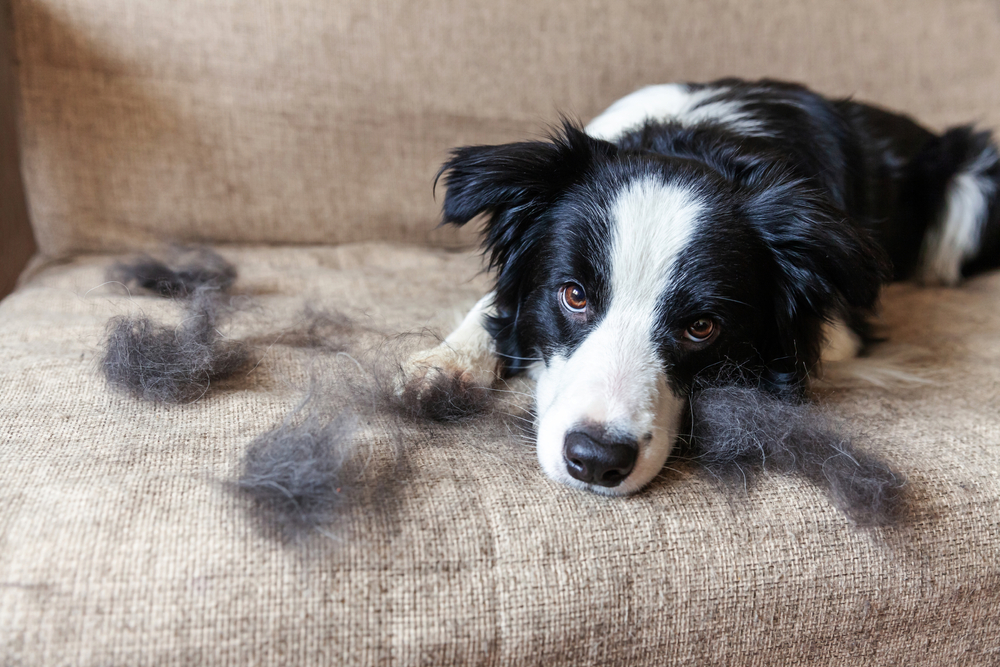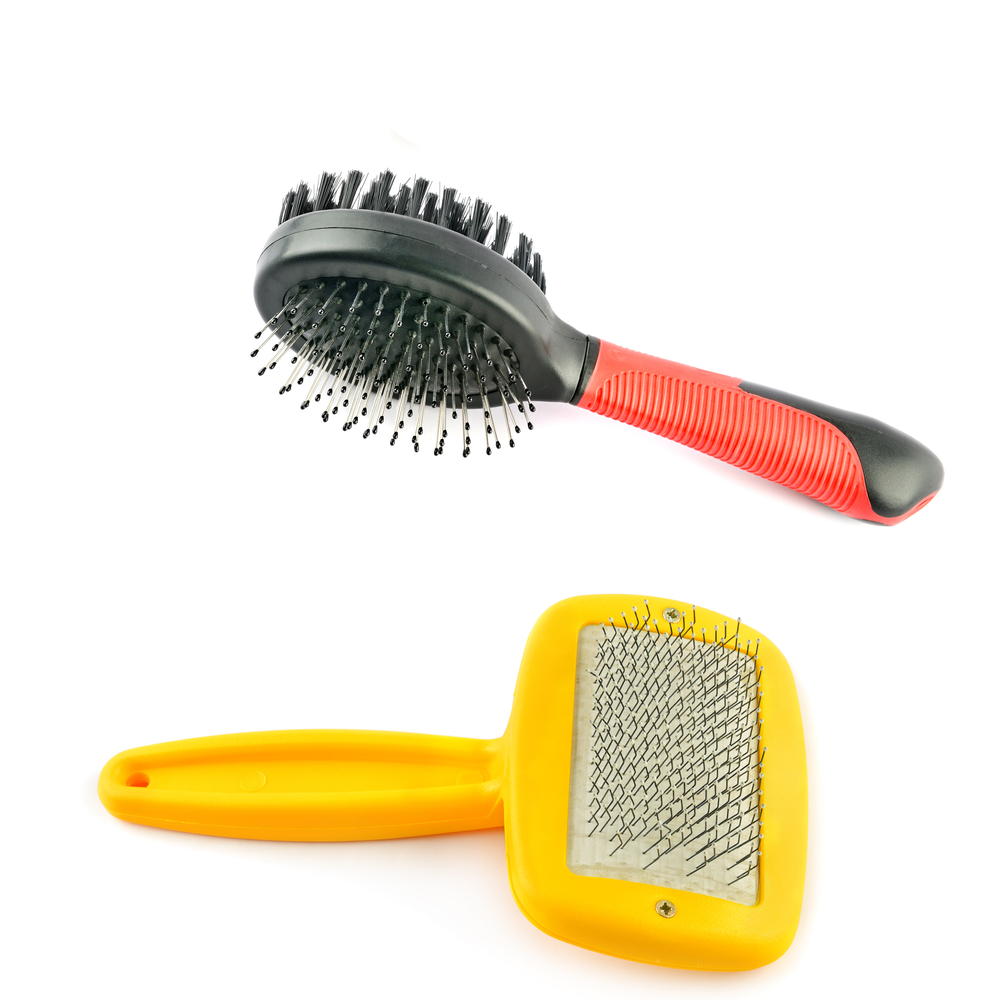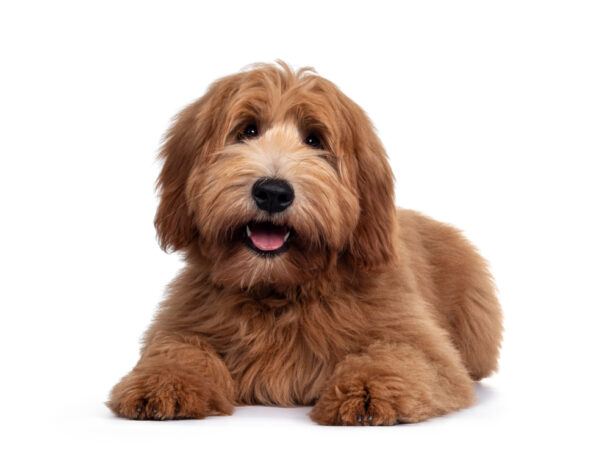LifeWithMyDogs is supported by our audience. When you purchase through one of our links, we may earn a small affiliate commission. As an Amazon Associate I earn from qualifying purchases. Your cost is not affected.
**********
Dog hair everywhere! Some dogs seem to be forever shedding. And short-haired dogs shed just as much. Those shorter hairs often cause more problems. Most of us wonder, “Why does my dog shed so much? Am I doing something wrong?” The truth is, dogs do shed. But you don’t have to live with hair all over your clothing and furniture. Reasonable solutions do exist!
Why Does My Dog Shed So Much? Understanding the Causes and Solutions
Does your furry friend seem to be shedding more than usual? It can be frustrating to constantly clean up after your dog, and you may wonder why they are shedding so much. Shedding is a natural process for dogs, but excessive shedding can indicate an underlying issue. There are many reasons why dogs shed, such as changes in the environment, stress, hormonal imbalances, and skin infections. Identifying the cause of your dog’s excessive shedding is essential to address the issue adequately. By understanding why your dog is shedding so much, you can take steps to manage it and keep your home clean. This article explores the common reasons dogs shed and provides tips for reducing shedding in your furry friend.

Understanding Dog Shedding
If you own a dog, you know that shedding is a natural part of dog ownership. However, excessive shedding sometimes shows a sign of an underlying health problem or poor nutrition. In this section, we’ll take a closer look at the factors that influence dog shedding and the dog hair growth cycle.
Dog Hair Growth Cycle
To understand why dogs shed, it’s essential to understand the dog hair growth cycle. Dog hair has three phases: anagen (growth), catagen (transition), and telogen (resting). During the anagen phase, the hair follicle actively grows and produces hair. Depending on the breed, this phase usually lasts a few months to several years. During the catagen phase, the hair follicle shrinks and detaches from the shaft. Finally, the hair follicle rests during the telogen phase, and the hair shaft falls out.
Factors Influencing Shedding
Several factors influence how much your dog sheds. Here are some of the most common:
- Breed: Some breeds, like the Labrador Retriever and German Shepherd, are heavy shedders, while others, like the Poodle and Bichon Frise, shed very little.
- Season: Dogs typically shed more in the spring and fall as they prepare for the changing seasons.
- Nutrition: A poor diet can lead to dry, brittle hair that is more prone to shedding.
- Health: Certain health conditions, like allergies and thyroid problems, can cause excessive shedding.
- Stress: Stressed or anxious dogs may shed more than usual.
By understanding the factors that influence shedding and the dog hair growth cycle, you can better manage your dog’s shedding and ensure they are healthy and happy.

Common Reasons for Excessive Shedding
If you’re wondering why your dog is shedding so much, several common reasons sometimes contribute to the problem. Here are a few possible culprits:
Seasonal Changes
Dogs typically shed more during seasonal changes, particularly in the spring and fall. This is because their coats adapt to changing temperatures and daylight hours. During these periods, you may notice more hair than usual on your furniture, carpets, and clothing. However, if your dog’s shedding seems excessive even during these seasonal changes, it might indicate an underlying issue.
Health Conditions
Some health conditions can cause excessive shedding in dogs. For example, hypothyroidism, Cushing’s disease, and allergies can all contribute to hair loss. If you notice that your dog is shedding more than usual and you suspect a health issue, you must take them to the vet for an evaluation. Seasonal allergic reactions often cause your pet to scratch more. This excessive scratching sometimes leads to skin conditions such as fungal infections.
Poor Nutrition
Dogs need a balanced diet to maintain a healthy coat. If your dog isn’t getting the nutrients they need, their coat may become dry, brittle, and prone to shedding. Please ensure you’re feeding your dog a high-quality, nutritionally balanced diet appropriate for their age, breed, and activity level.
Stress and Anxiety
Stress and anxiety can also contribute to excessive shedding in dogs. If your dog is stressed or anxious, he may lick or chew his fur excessively, leading to hair loss. If you suspect stress or anxiety contributes to your dog’s shedding, talk to your vet about ways to manage their symptoms. You can help keep your dog’s coat healthy and shiny by addressing these common reasons for excessive shedding. If you’re concerned about your dog’s shedding, talk to your vet to rule out any underlying health issues and get advice on managing the problem.

Breeds Prone to Shedding
If you are wondering why your dog sheds so much, it’s essential to understand that shedding is a natural process in all dogs. However, some breeds tend to shed more than others. Here are some of the breeds that are prone to shedding:
- Labrador Retriever
- German Shepherd
- Golden Retriever
- Siberian Husky
- Alaskan Malamute
- Saint Bernard
- Bernese Mountain Dog
- Great Pyrenees
- Chow Chow
- Akita
- Samoyed
- Australian Shepherd
These breeds have thick, double-layered coats that help them regulate their body temperature in different weather conditions. However, this also means that they shed a lot of hair throughout the year, especially during the shedding seasons in spring and fall.
If you own one of these breeds, you must be prepared for the shedding and take steps to manage it. Regular grooming and brushing can help remove loose hair and prevent mats and tangles in the coat. Consider using a de-shedding tool or taking your dog to a professional groomer for a thorough grooming session.
It’s worth noting that not all dogs within these breeds will shed equally. Genetics, diet, and overall health can also affect how much a dog sheds. If you are concerned about your dog’s shedding, it’s always a good idea to talk to your veterinarian to rule out any underlying health issues.
How to Manage Your Dog’s Shedding
If you’re tired of constantly cleaning up dog hair, there are a few things you can do to manage your dog’s shedding. Regular grooming, proper nutrition, and regular vet check-ups are all critical factors.

Regular Grooming
Grooming your pet regularly helps manage shedding. I think this is your first step in hair management. Regularly brushing your dog’s coat helps remove loose hair and prevent mats and tangles. Use a natural-bristle brush, hound mitt, or glove with bristles on the palm. First, brush the coat in the opposite direction of hair growth, then brush it back into place. This will help loosen dead hair and set it free.
In addition to helping to remove dead hair, brushing stimulates the dog’s skin, which also helps combat shedding. Naturally, heavy shedders benefit from even more grooming with the right brush.
Different breeds have different grooming needs depending on their coat types, so you may have to research before finding the perfect brush. Common helpful brushes include:
- Slicker brush
- Undercoat rake
- Shedding blade
- Bristle brush
Bathing your dog regularly can also help manage shedding. You can use a dog-specific shampoo and conditioner and rinse thoroughly.
Proper Nutrition
Proper nutrition is vital for your dog’s overall health. This includes his coat. Feeding your dog high-quality dog food rich in essential fatty acids helps keep his coat healthy and reduces shedding. Omega-3 and Omega-6 fatty acids are necessary for skin and coat health.
Regular Vet Check-ups
Regular vet check-ups are essential for maintaining your dog’s health and identifying any underlying health issues causing excessive shedding. Certain health conditions, such as allergies or thyroid problems, can cause excessive shedding. Your vet can perform a physical exam and run blood tests to help identify any potential health issues.
By following these tips, you can help manage your dog’s shedding and keep your home cleaner and more comfortable for you and your furry friend.
When to Seek Veterinary Help
If you notice excessive shedding in your dog, monitoring them closely is essential. Shedding can be a regular part of a dog’s life. But it also might be a sign of an underlying health issue. Here are some signs that you should seek veterinary help:
- Bald patches or thinning fur: If you notice any bald patches or thinning fur on your dog, it could be a sign of a health problem. This could be due to a skin condition, hormonal imbalance, or other underlying health issues.
- Excessive scratching or biting: If your dog is constantly scratching or biting at their fur, it could be a sign of an allergy or skin irritation. This can lead to excessive shedding and should be addressed by a veterinarian.
- Changes in behavior: If you notice changes in your dog’s behavior, such as lethargy, loss of appetite, or a lack of interest in activities they used to enjoy, it could be a sign of an underlying health issue. Excessive shedding could be a symptom of a more significant problem.
- Persistent shedding: If your dog’s shedding seems excessive and doesn’t seem to be improving with regular grooming or changes in diet, it’s essential to seek veterinary help. This could be a sign of an underlying health issue that needs to be addressed.
It’s important to remember that shedding is a natural process for dogs. But excessive shedding often signifies a more significant problem. If you notice these signs, seeking veterinary help to ensure your dog is healthy and happy is essential.
Fur-Farewell to Shedding Woes: Embrace a Cleaner, Happier Home!
In wrapping up our exploration into the world of dog shedding, one thing remains clear: shedding is a natural phenomenon rooted in your furry friend’s biology. By understanding the underlying causes and implementing simple solutions, you can reclaim your home from the clutches of excessive fur. Remember, a combination of a balanced diet, regular grooming, and a proactive approach to tackling shedding can lead to a cozier, cleaner living environment for both you and your beloved canine companion. So, bid adieu to endless fur tumbleweeds and say hello to a happier, harmonious home!
Frequently Asked Questions
How do I stop my dog from shedding constantly?
Unfortunately, there is no guaranteed way to stop a dog from shedding. However, there are some things you can do to reduce the amount of shedding. Brushing your dog regularly can help remove loose hair and prevent it from spreading around your home. Feeding your dog a well-balanced diet with high-quality protein and omega-3 fatty acids help promote healthy skin and coat. Some grooming tools, such as de-shedding combs, help remove excess hair. If you want more about how dog food influences excessive shedding, you can see this article by ZME Science.
What causes a dog to shed excessively?
There are several reasons why a dog may shed excessively. Some common causes include seasonal changes, stress or anxiety, poor nutrition, allergies, and underlying medical conditions such as hypothyroidism or follicular dysplasia. If you are concerned about your dog’s shedding, it is best to consult with your veterinarian to rule out any underlying health issues.
What months do dogs shed the most?
Dogs typically shed the most during the spring and fall months. During these seasons, dogs may shed their winter or summer coats in preparation for the upcoming season. However, some dogs may also shed year-round, depending on their breed and individual coat type.
Do healthy dogs shed more?
Not necessarily. While a healthy dog may shed normally, excessive shedding often indicates an underlying health issue. If you are concerned about your dog’s shedding, it is best to consult with your veterinarian to rule out any underlying medical conditions.
Why is my female dog shedding so much?
Female dogs may shed more during certain times, such as after giving birth or during heat cycles. However, excessive shedding also sometimes indicates an underlying health issue, so it is best to consult with your veterinarian if you are concerned.
My dog is shedding a lot in winter.
It is usual for dogs to shed their summer coat in preparation for the winter months. However, if your dog is shedding excessively or has bald spots, it is best to consult your veterinarian to rule out any underlying health issues.
Elevate Your Dog’s Health: Connect with Our Pet-Care Community!
Experience a wealth of invaluable insights in dog care, disease prevention, and fostering a stronger bond with your beloved canine companion. Immerse yourself in a world of meticulously curated content, stay abreast of the latest in product reviews, and forge connections with fellow pet enthusiasts who share your passion for holistic dog well-being.
Our vibrant online community awaits you on various platforms:
- Facebook: Discover a hub of knowledge-sharing and connect with like-minded dog lovers. Visit us on Facebook
- Instagram: Explore captivating visuals and snapshots of joyful canine moments, all while learning about effective pet-care strategies. Follow us on Instagram
- Pinterest: Unlock a treasure trove of curated boards dedicated to dog care, disease prevention, and so much more. Explore us on Pinterest
- Twitter: Stay informed and engaged through bite-sized updates on the latest in dog care and health maintenance. Follow us on Twitter
Join us in ensuring a healthier, happier life for your four-legged friend. Your dog’s well-being is our priority, and our community is here to support you every step of the way. Discover the path to a more fulfilling companionship today!


